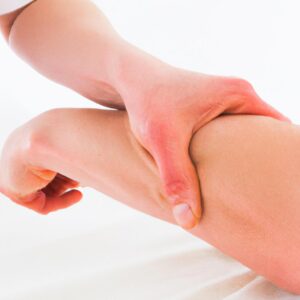**”Maximizing GPS Features for Cycle Training: How to Use Route Mapping and Elevation Tracking to Improve Performance”**
# Maximizing GPS Features for Cycle Training: How to Use Route Mapping and Elevation Tracking to Improve Performance
Cycling is not just about pedaling; it’s an intricate blend of endurance, strategy, and technology. With the advent of GPS technology, cyclists now have access to powerful tools that can help maximize their training efforts. Route mapping and elevation tracking are two standout features that can significantly enhance performance. This post will delve into how to leverage these GPS features effectively, alongside essential nutrition tips and exercise advice to elevate your cycling game.
## The Power of Route Mapping
### Understanding Route Mapping
Route mapping allows cyclists to plan and analyze their rides in detail. By plotting out a route before heading out, cyclists can explore new trails, optimize their training sessions, and avoid hazardous areas. Many GPS devices and apps, such as Strava, Komoot, and Garmin Connect, provide detailed mapping features, enabling users to view different terrains, distances, and even elevation profiles.
### Benefits of Route Planning
1. **Targeted Training**: By choosing routes that match specific training goals (such as intervals or endurance rides), cyclists can better focus their efforts.
2. **Exploration and Variety**: Cycling the same routes repeatedly can lead to boredom and burnout. Route mapping opens up new possibilities, helping cyclists discover hidden gems in their local area.
3. **Safety**: Knowing the terrain and potential hazards can reduce the risk of accidents. Route mapping can help cyclists avoid busy roads or steep descents that may not be suitable for all skill levels.
## Elevation Tracking: Climb Your Way to Better Performance
### The Importance of Elevation Tracking
Elevation tracking measures the vertical gain during a ride, providing insights into the intensity of the workout. Understanding how elevation affects your performance can help tailor your training to build strength and endurance.
### Benefits of Elevation Tracking
1. **Effective Training**: Cycling on varied terrain helps build muscle strength and cardiovascular endurance. Elevation tracking allows cyclists to target climbs and descents, ensuring they’re adequately challenged.
2. **Performance Analysis**: After a ride, analyzing elevation data can reveal patterns in performance. Cyclists can identify which climbs are most challenging and adjust their training accordingly.
3. **Goal Setting**: Elevation data can serve as a benchmark for setting future goals. Whether it’s conquering a local hill or preparing for a mountain race, tracking elevation can guide cyclists in their preparations.
## Nutrition Tips for Cyclists
To maximize performance, cycling must be paired with proper nutrition. Here are some essential tips:
1. **Hydration is Key**: Stay hydrated before, during, and after rides. Dehydration can significantly impair performance. Aim to drink water or electrolyte-rich beverages.
2. **Fuel Your Ride**: Consume carbohydrates before long rides to ensure you have enough energy. For rides over 90 minutes, consider bringing energy gels or bars to sustain your energy levels.
3. **Post-Ride Recovery**: After a ride, replenish lost nutrients with a balanced meal rich in carbohydrates and protein. This will help repair muscles and restore energy levels.
## Exercise Advice for Optimal Cycle Training
Incorporating specific exercises can enhance cycling performance. Here are some recommendations:
1. **Strength Training**: Focus on lower body exercises like squats, lunges, and deadlifts to build muscle strength. Core stability exercises, such as planks and bridges, are also vital for maintaining proper cycling posture.
2. **Interval Training**: Integrate high-intensity interval training (HIIT) into your cycling routine. Short bursts of intense effort followed by recovery periods can boost cardiovascular fitness and improve speed.
3. **Flexibility and Recovery**: Regular stretching and yoga can improve flexibility, reduce injury risk, and enhance recovery. Consider incorporating these practices into your routine to maintain overall fitness.
## Health Benefits of Cycling
Beyond performance improvement, cycling offers numerous health benefits:
1. **Cardiovascular Health**: Regular cycling strengthens the heart, improving circulation and reducing the risk of heart disease.
2. **Mental Well-Being**: Cycling releases endorphins, which can improve mood and reduce stress. It’s a great way to clear your mind and enjoy the outdoors.
3. **Weight Management**: Cycling is an effective way to burn calories and maintain a healthy weight. It’s a low-impact exercise that can be adjusted to fit any fitness level.
## Conclusion
Maximizing GPS features like route mapping and elevation tracking can transform your cycle training. By understanding the advantages these tools offer and combining them with proper nutrition and exercise strategies, you can enhance your performance and enjoy the journey. Embrace the technology at your fingertips, and take your cycling experience to new heights. Whether you’re a casual rider or a serious competitor, the right approach can lead to meaningful improvements in your cycling journey. Happy riding!















Post Comment